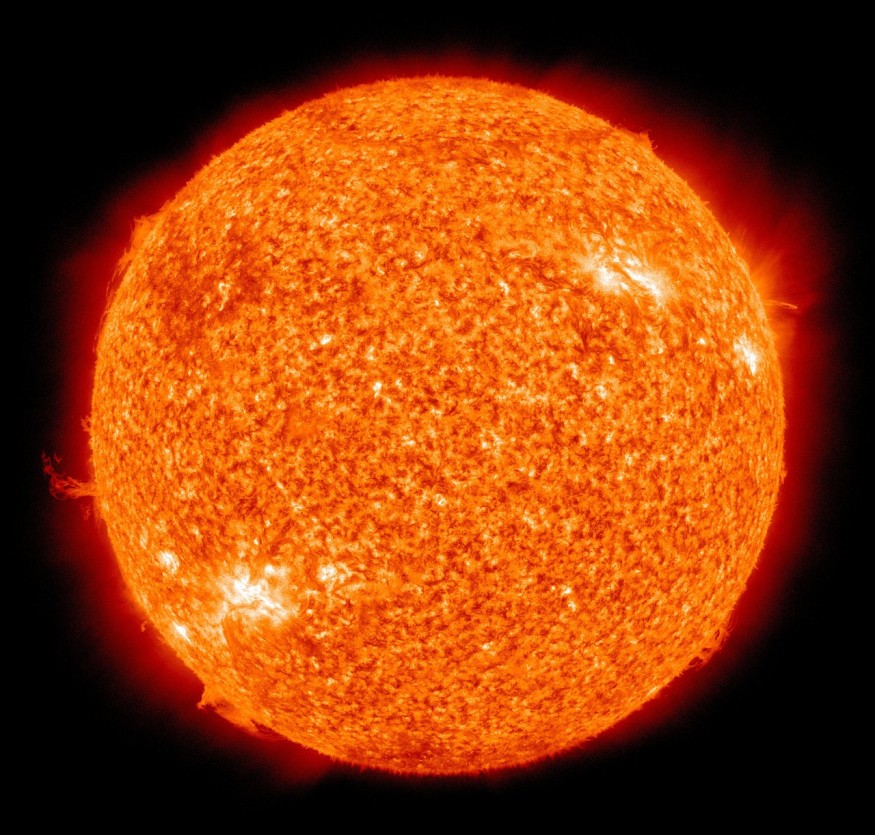A solar storm warning was issued by the National Oceanic and Atmospheric Administration (NOAA) for Friday, June 2, following the formation of a new sunspot. The said solar phenomenon reportedly threatens Earth with a potential radio blackout, which can disrupt low and high radio frequencies on our planet. The looming threat could occur in the coming hours leading to the weekend.
For more than a year, some giant sunspots from our solar system's only star have been observed by astronomers to emit immense bursts of energy. These solar explosions come in the form of solar flares, solar winds, or coronal mass ejections (CMEs). The space weather events have resulted not only in radio blackouts but also in geomagnetic storms that disrupted our magnetosphere and caused aurora borealis.
NOAA Solar Storm Warning

The NOAA solar storm warning has only sparked renewed fears for blackouts, which have also occurred recently on Earth, according to a report by the website Tech Hindustan Times, which also said solar activity is increasing again after almost three weeks of being dormant. However, in recent days, a growing concern among astronomers and researchers have been directed toward the new sunspot.
The sunspot has been identified on the southeastern limb of the Sun, which emitted an explosion that produced a solar flare that caused radio blackouts on our planet on Wednesday, May 31.
In the latest update, NOAA forecasters reportedly issued a minor geomagnetic storm watch, which means that a minor G1-class geomagnetic storms can occur on Friday, as cited by the website spaceweather.com. This is possible as a solar wind is anticipated to strike Earth's magnetic field again.
The solar storm alert came after the NOAA's Space Weather Prediction Center (SWPC) issued an extended warning on Thursday, June 1.
Also Read : Solar Storm Alert: X-Class Solar Flare Could Hit Earth with Power Equivalent to Billion Hydrogen Bombs
What is a Radio Blackout?
In late February 2023, a powerful solar flare from a different sunspot region of the Sun was reported by the SWPC. The flare produced radio blackouts across the United States and countries in Latin America, Newsweek reported.
Using February's solar storm event, radio blackouts occurred when particles from the flare interacted with our planet's atmosphere, resulting in a "loss of signal below 30 megahertz" across the Americas for 30 minutes, the report said.
Aside from radio blackouts, other products of solar storms mentioned earlier such as geomagnetic storms target Earth's modern technology, especially equipment, devices, and craft that rely on satellite technology. However, today's solar storms are nothing compared to the historic 'Carrington Event.'
The Carrington Event
Dubbed as a "super solar flare" by the National Aeronautics and Space Administration (NASA), the Carrington Event of September 1859 is widely considered as the world's most powerful solar storm in recorded history.
Its initial discovery was credited and named to Richard Carrington, one of England's well-known astronomers at that time.
The event was so massive it damaged or destroyed telegraph systems worldwide, where some cases involved telegraph operators being shocked by spark charges, NASA recounted.
Related Article: Solar Storm Alert: Geomagnetic Storm Likely to Hit Earth on Sunday
© 2025 NatureWorldNews.com All rights reserved. Do not reproduce without permission.





